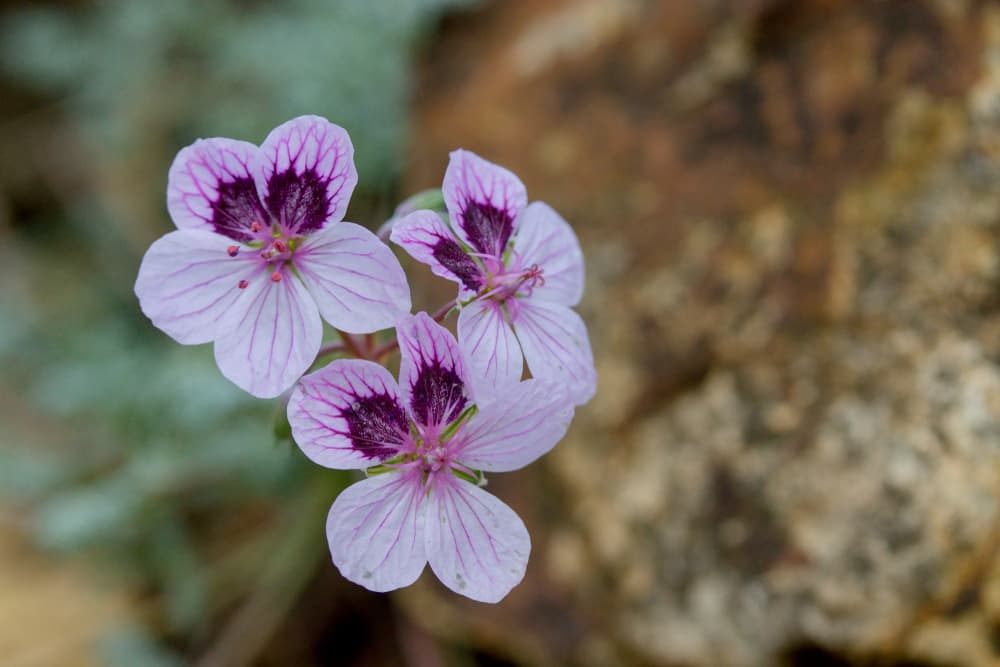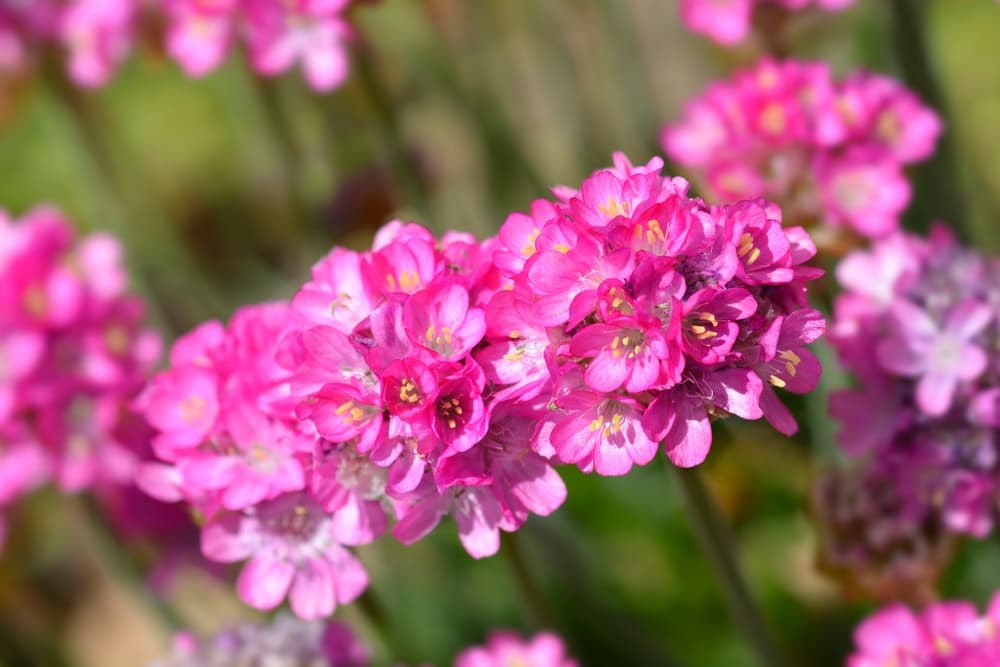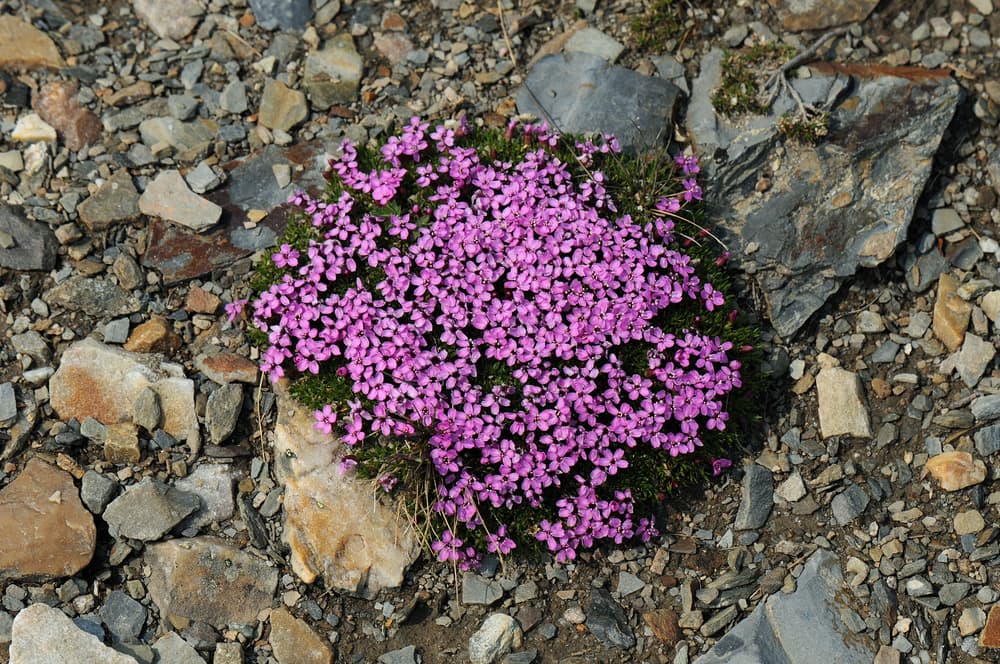Learn To Grow An Alpine Rock Garden With Inspiration From RHS Harlow Carr


Elizabeth is a Permaculture Garden Designer, Sustainability Consultant and Professional Writer, working as an advocate for positive change. She graduated from the University of St. Andrews with an MA in English and Philosophy and obtained a Diploma in Applied Permaculture Design from the Permaculture Association.
Reviewed By COLIN SKELLY

Colin is a Horticulturist and Horticultural Consultant with experience in a range of practical and managerial roles across heritage, commercial and public horticulture. He holds the Royal Horticultural Society’s Master of Horticulture award and has a particular interest in horticultural ecology and naturalistic planting for habitat and climate resilience.
Contributions From HAYLEY WILLERTON

Hayley Willerton is the owner of The Alpine and Grass Nursery, a specialist plant nursery based in Lincolnshire. She has been growing alpines and grasses for over 20 years and has won multiple Gold Medals at various RHS Flower Shows.
There are plenty of great plants to consider for an alpine rock garden.
But when you are getting started with growing alpines, it can be great to have a list of some of the favourites that you can use as a starting point for making your selections.
A rock garden is a great feature for a garden – typically in a sunny and open spot.
Creating this type of habitat will allow you to grow a range of relatively low-maintenance plants which come from rocky and mountainous regions, and make the most of areas that may have nutrient-poor and/or shallow soils.
Expert Chosen Varieties
We consulted with a specialist grower to find out their favourite alpines that could be suitable for growth in a rock garden.
“Alpines incorporate so many different varieties,” says Hayley Willerton, Owner of The Alpine and Grass Nursery.

“[They] don’t enjoy winter wet and prefer drying out before being watered again.
“Ventilation is also essential and as all the alpines we grow are hardy, they do not need covering up in winter.”
Some of Hayley’s favourite varieties include:
Erodium x kolbianum ‘Natasha’

“This is a very pretty alpine with fern-like, silver-green leaves bearing darkly veined pink flowers with two maroon eyes,” shares Hayley.
“These alpines love basking in full sun.”
Armeria maritima ‘Dusseldorf Pride’

“‘Dusseldorf Pride’ bears many clusters of deep pink flowers from spring through to autumn.
“It is loved by pollinators and thrives in either full sun or partial shade.”
Silene acaulis

“This is a compact, slow-growing alpine, studded with tiny pink flowers and is a true delight,” says Hayley.
“This alpine always makes me smile.”
So – if you have made an alpine rock garden, or are thinking about making one, here are fifteen further plants to consider:
1) Aubretia

- SUNLIGHT: FULL SUN
- SOIL: WELL-DRAINED; ALKALINE OR NEUTRAL
- HARDINESS RATING: H6
Aubretia, also known as purple rock cress or purple chickweed, is a hardy (H6) mat-forming perennial.
It is evergreen and has copious, lovely little pink or purplish flowers in the spring.
It will thrive in full sun and well-drained soil that is alkaline or neutral in pH, but can also tolerate a little partial shade.
2) Campanula

- SUNLIGHT: FULL SUN OR PARTIAL SHADE
- SOIL: MOIST BUT WELL DRAINED; ANY PH
- HARDINESS RATING: H5
There is a wide range of diminutive bellflowers, Campanula, which are perfect for rock gardens.
There are literally hundreds of varied options within this genus.
One type of bellflower which I would recommend for a rock garden is Campanula portenschlagiana – wall bellflower.
This low growing perennial is a great alpine plant, which is evergreen, forming dense mats of small rounded leaves.
They have pretty violet-blue flowers in the summer.
H5 hardy, these are ideal for rock gardens or sunny borders where conditions don’t get too wet in winter.
3) Dianthus

- SUNLIGHT: FULL SUN
- SOIL: WELL DRAINED; ALKALINE OR NEUTRAL
- HARDINESS RATING: H6
Alpine varieties of Dianthus, also known as ‘Pinks’ are also ideal for many alpine rock gardens.
D. alpinus is another mat-forming perennial which bears pretty pink or cerise flowers in the summer months.
It is H6 hardy, and will thrive in a well-drained position in full sun, with alkaline or neutral pH.
Their flowers are vibrant additions to an alpine rockery.
4) Gentiana verna

- SUNLIGHT: FULL SUN
- SOIL: MOIST BUT WELL DRAINED; ALKALINE OR NEUTRAL
- HARDINESS RATING: H5
Spring gentian is another lovely alpine for a rockery, which is another small evergreen mat-forming perennial.
But in spite of its small size, it can really make a big impact with its stunning sky-blue flowers with white centres, which bloom in late spring and early summer.
It is H5 hardy, and prefers moist but well-drained soil that is alkaline or neutral, in full sun.
5) Geraniums (Alpine Varieties)

- SUNLIGHT: FULL SUN OR PARTIAL SHADE
- SOIL: MOIST BUT WELL DRAINED; ANY PH
- HARDINESS RATING: H5
Alpine geraniums are another notable group of plants to consider for an alpine rock garden.
One great example is G. ‘Ballerina‘ (Cinereum Group), a great ground cover plant and great for wildlife.1Geranium (Cinereum Group). (n.d.). Royal Horticultural Society. Retrieved March 9, 2023, from https://www.rhs.org.uk/plants/194563/geranium-(cinereum-group)-ballerina/details
It is an H5 hardy herbaceous perennial which forms small clumps of foliage and flowers with pinkish purple-hued blooms in late spring and summer.
The evergreen perennial G. dalmaticum is another great option to consider for your rock garden.
6) Lithodora

- SUNLIGHT: FULL SUN
- SOIL: WELL DRAINED; ACIDIC OR NEUTRAL
- HARDINESS RATING: H5
Lithodora diffusa is a great training plant for the rock garden.
H5 hardy, it has deep green foliage that spreads well, and deep gentian blue flowers which bloom over a long period from May through the summer months.
It will do best in full sun; in acidic or neutral soil.
7) Penstemon

- SUNLIGHT: FULL SUN
- SOIL: WELL DRAINED; ANY PH
- HARDINESS RATING: H4
Pine-leaved Penstemon, P. pinifolius, is another interesting plant to consider.
This bushy dwarf shrub is evergreen, with short, needle leaves – and it bears bright scarlet tubular flowers in the summer months.
It will thrive in very well-drained, sheltered, spots in full sun.
Another Penstemon to consider is P. laetus subsp. roezlii, a perennial which bears purple flowers from late spring to mid-summer.
8) Pulsatilla vulgaris

- SUNLIGHT: FULL SUN
- SOIL: VERY WELL DRAINED; ANY PH
- HARDINESS RATING: H5
Also known as pasqueflower or meadow anemone, this clump-forming perennial wows with its large nodding purple flowers, followed by silky fruiting heads.
It is H5 hardy and will thrive in any very well-drained soil in full sun.
Though it can be hard to establish, once it beds in it is wonderful for an impressive alpine rock garden.
9) Phlox

- SUNLIGHT: FULL SUN OR PARTIAL SHADE
- SOIL: MOIST BUT WELL DRAINED; ANY PH
- HARDINESS RATING: H6
Phlox is a genus which offers a number of different mat-forming evergreen perennials that work very well in sunny, well-drained rock gardens.
They have small pinkish flowers which emerge from late spring.
Phlox douglasii and P. subulata are both great examples, which are H6 hardy and fairly resilient in the right conditions.
10) Primula

- SUNLIGHT: FULL SUN OR PARTIAL SHADE
- SOIL: WELL DRAINED; ALKALINE OR NEUTRAL
- HARDINESS RATING: H5
For a moist but well-drained rock garden in full sun, ideally in loam, Primula auricula is another reliable choice.
This evergreen perennial has lovely bright flowers which emerge in the spring.
H5 hardy, these are relatively well known and popular primulas for a rock garden.
Note: these are not the same as true show auriculas.
Primula marginata, P. allionii and their many hybrids are also excellent options for an alpine rock garden.
11) Saxifraga

- SUNLIGHT: FULL SUN OR PARTIAL SHADE
- SOIL: WELL DRAINED; ALKALINE OR NEUTRAL
- HARDINESS RATING: H5
Saxifraga are yet more mat-forming perennials which are great for adding lush greenery to alpine spaces.
There are a number of examples with flowers of various different hues.
S. ‘Silver Cushion’ and S. paniculata ‘Lavagreana’, ‘Rosea’ and ‘Venetia’ are all top options to consider.
If you are new to alpine rock gardening then this genus should be one of the go-to choices.
12) Sedums

- SUNLIGHT: FULL SUN
- SOIL: WELL DRAINED; ALKALINE OR NEUTRAL
- HARDINESS RATING: H5
Like saxifrages, Sedums are also an obvious go-to choice, whether you are a complete novice or a far more experienced gardener of alpine plants.
Many stonecrops, with their pretty little star-shaped flowers, are ideal for nestling among rocks in a rockery, or even planting into the top of a stone wall.
S. cauticola, for example, is one such Sedum to consider.
13) Sempervivums

- SUNLIGHT: FULL SUN
- SOIL: WELL DRAINED; ANY PH
- HARDINESS RATING: H7
For free-draining, sunny sites, succulents like Sempervivum are often a great choice.
Houseleeks, as they are sometimes called, are very easy to please alpine succulents.
There is a reason why they are so well known and widely recognised – with attractive and intricate rosettes, they can grace your garden for many years as long as they don’t have ‘wet feet’ and are protected from excessive rain in winter.
14) Thyme

- SUNLIGHT: FULL SUN
- SOIL: WELL DRAINED; ALKALINE OR NEUTRAL
- HARDINESS RATING: H5
Thyme is a plant that you might be more likely to consider placing in a herb garden rather than in an alpine rock garden, but Thymus vulgaris will be right at home in this location.
Well known as a culinary herb, thyme can also be a great decorative plant – producing little purple flowers in addition to aromatic leaves.
A creeping thyme variety will be ideal for spreading through your rock garden.
15) Veronica

- SUNLIGHT: FULL SUN
- SOIL: WELL DRAINED; ANY PH
- HARDINESS RATING: H5
Veronica prostrata, or rock speedwell, is my final pick – another of my favourites for an alpine rock garden.
This mat-forming semi-evergreen perennial thrives in well-drained locations in full sun.
It is H5 hardy and has really pretty blue flowers that bloom during the summer months.
This is another relatively easy and low-maintenance plant.
Final Considerations
A rock garden can represent a big investment in rock, and in time and energy – even where the rocks are already available on site.
So it is important to make sure that you make the right plant choices for your particular rock garden.
Remember that “rock gardens should have a growing media that is relatively low in nutrients and organic matter and high in gravels, grits and sands to reflect the habitats that alpines come from,” according to Master Horticulturist Colin Skelly.
“Choosing the right plants means that they should thrive in the conditions that you have created for them, a ‘home from home’.
“However, plants that like fertile conditions will suffer, whilst drought-tolerant non-alpines might take over your rockery.
“A little homework on planting goes a long way to successful planting!”
References
- 1Geranium (Cinereum Group). (n.d.). Royal Horticultural Society. Retrieved March 9, 2023, from https://www.rhs.org.uk/plants/194563/geranium-(cinereum-group)-ballerina/details

